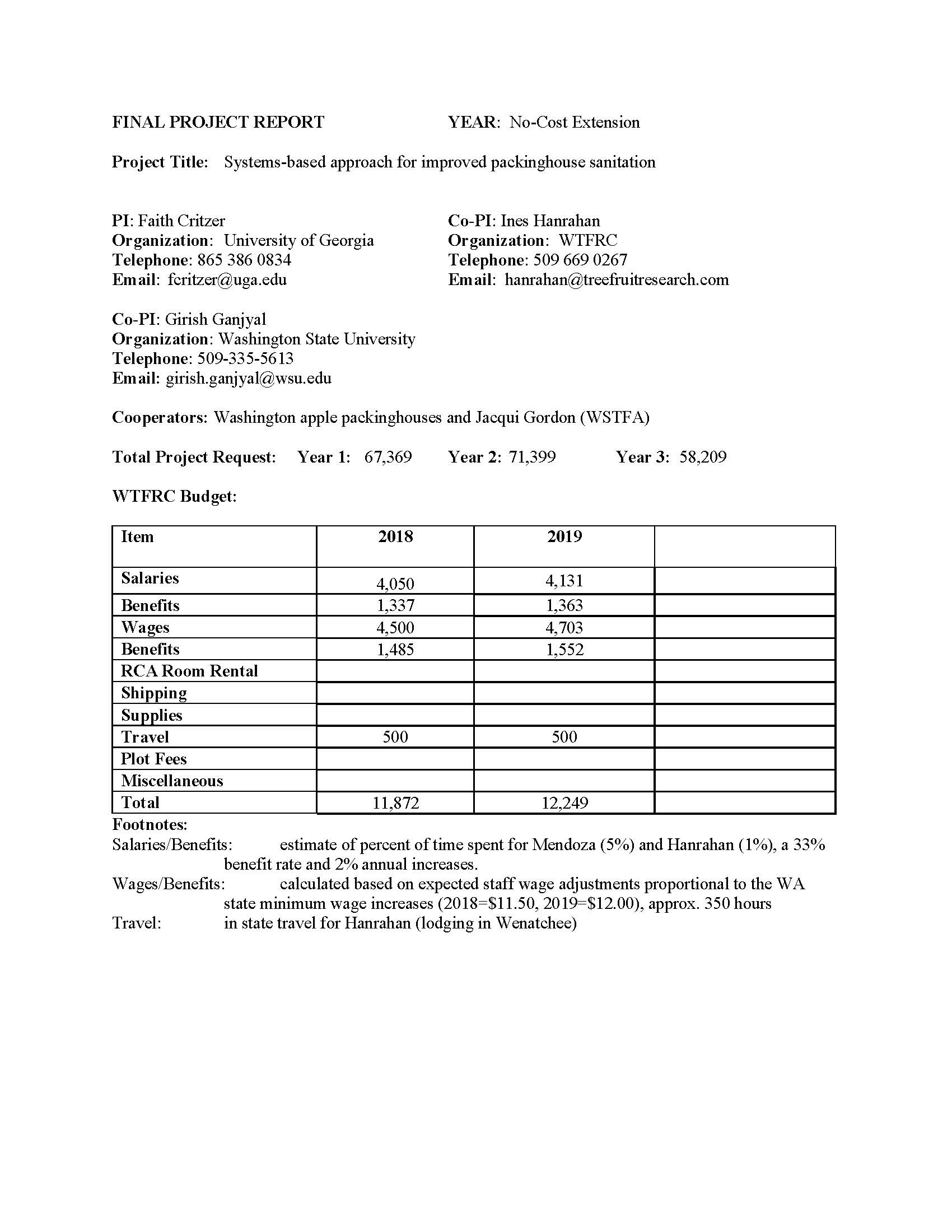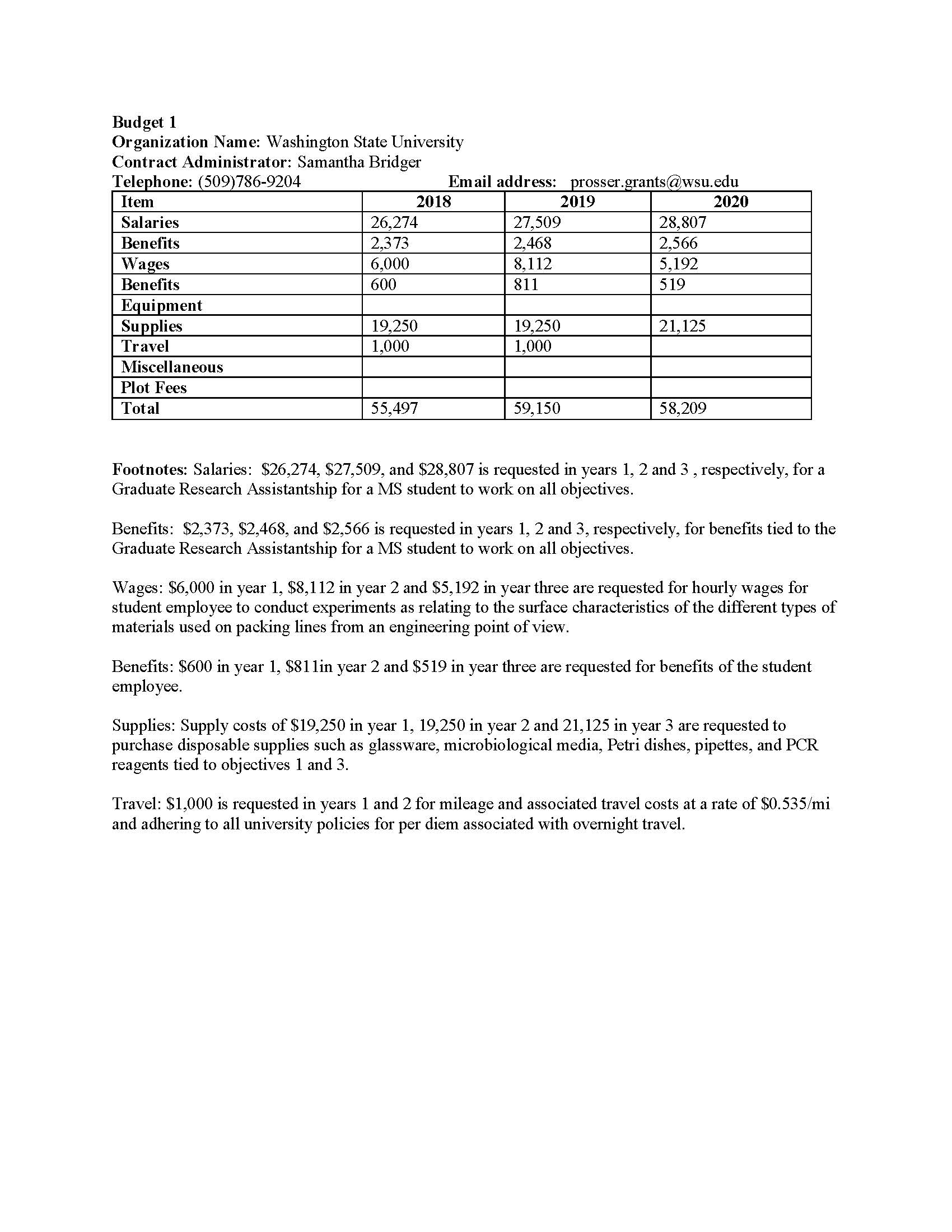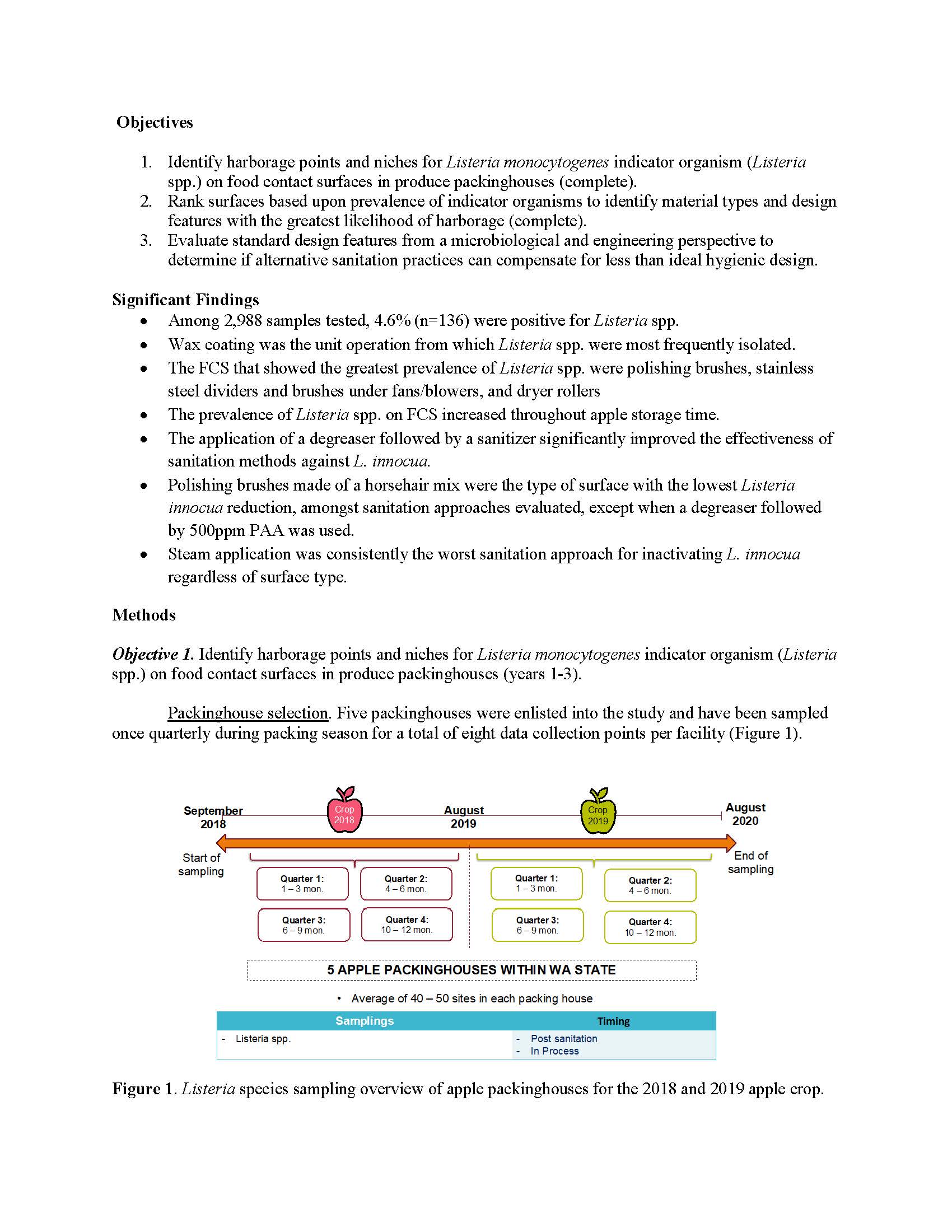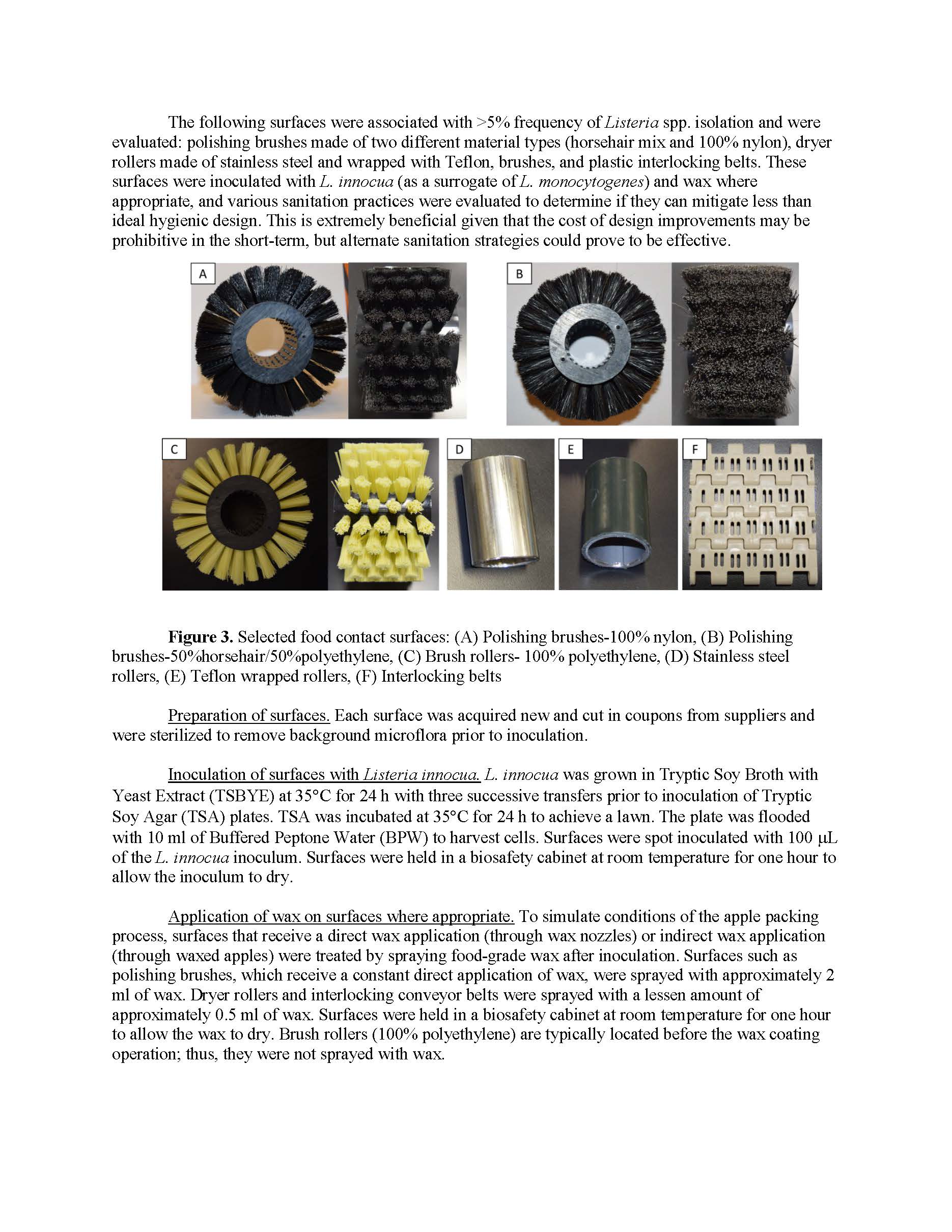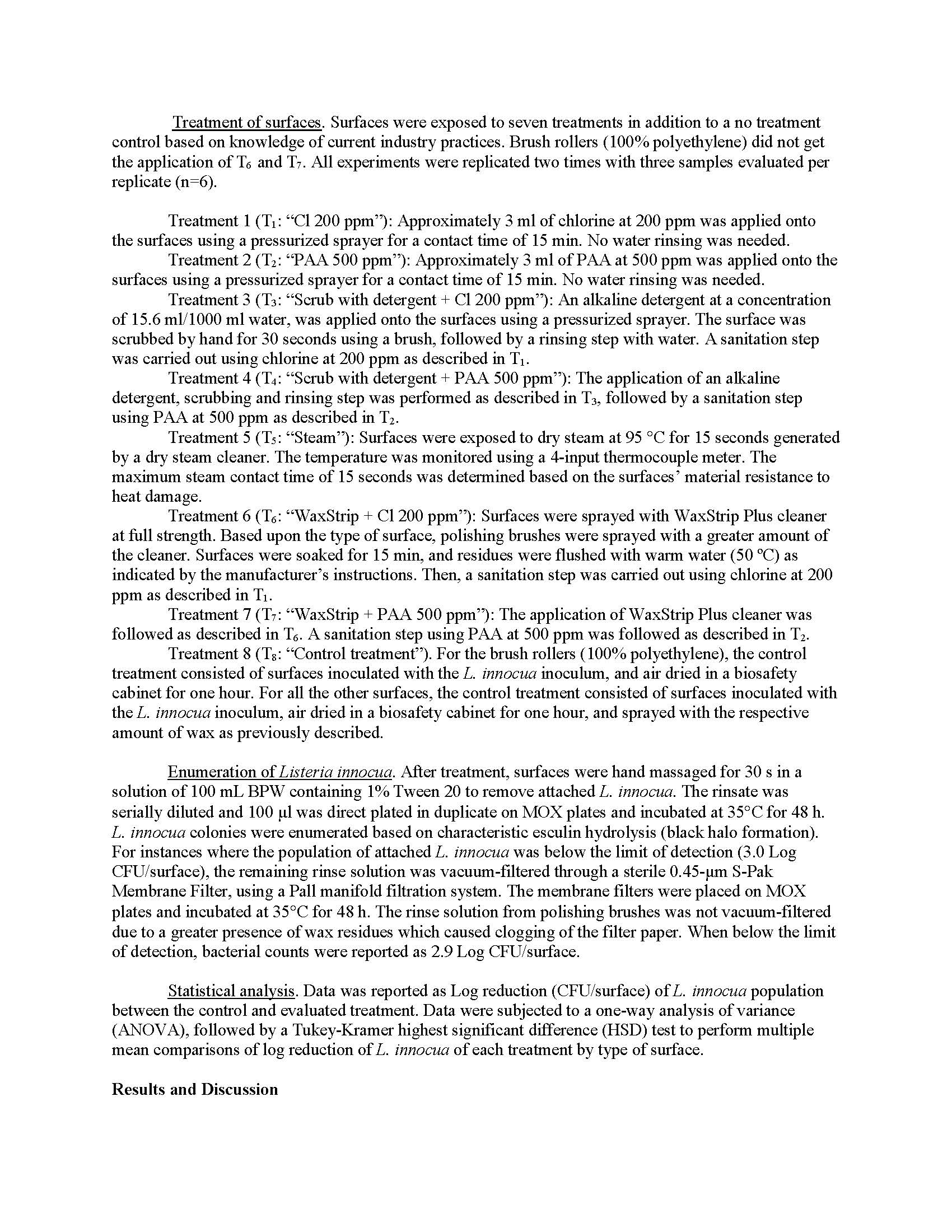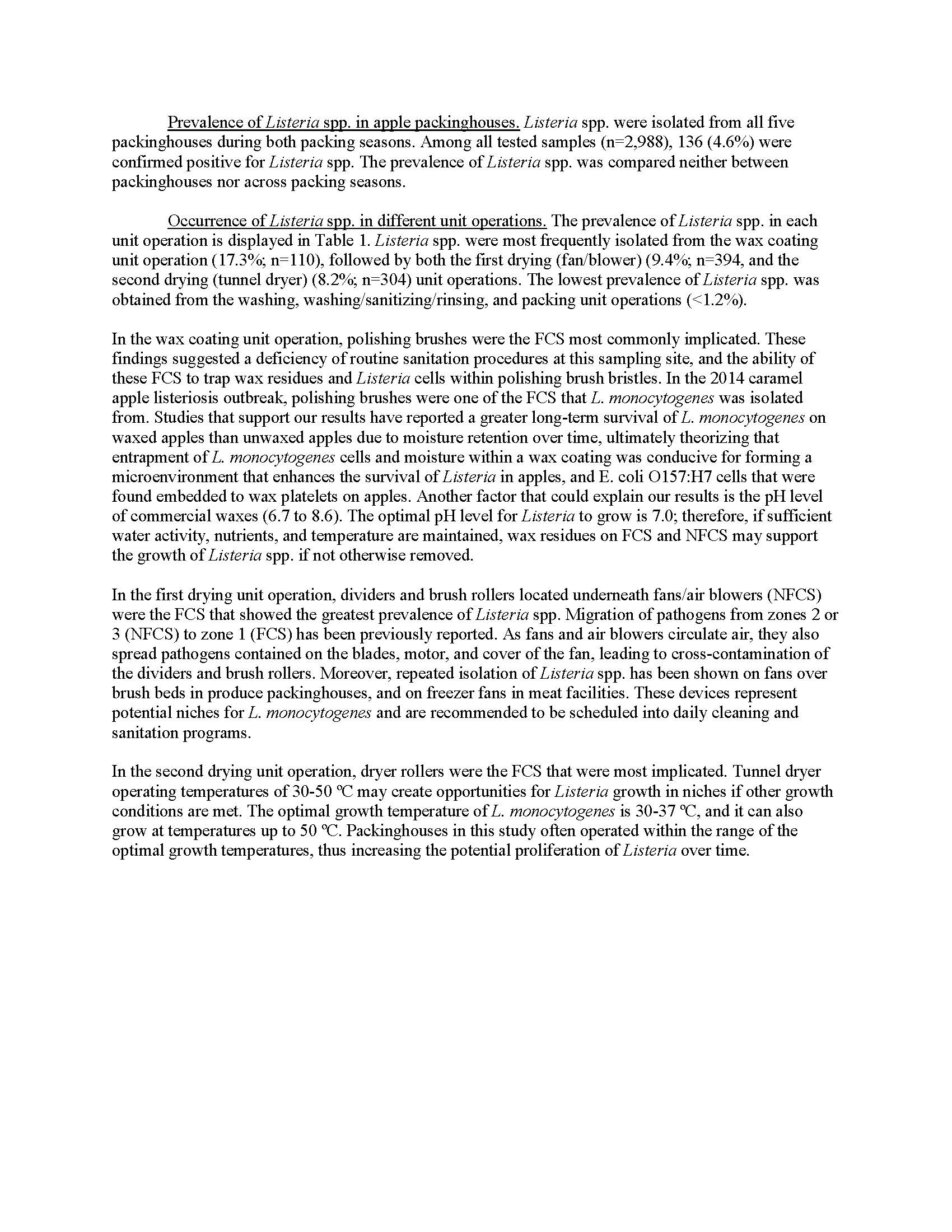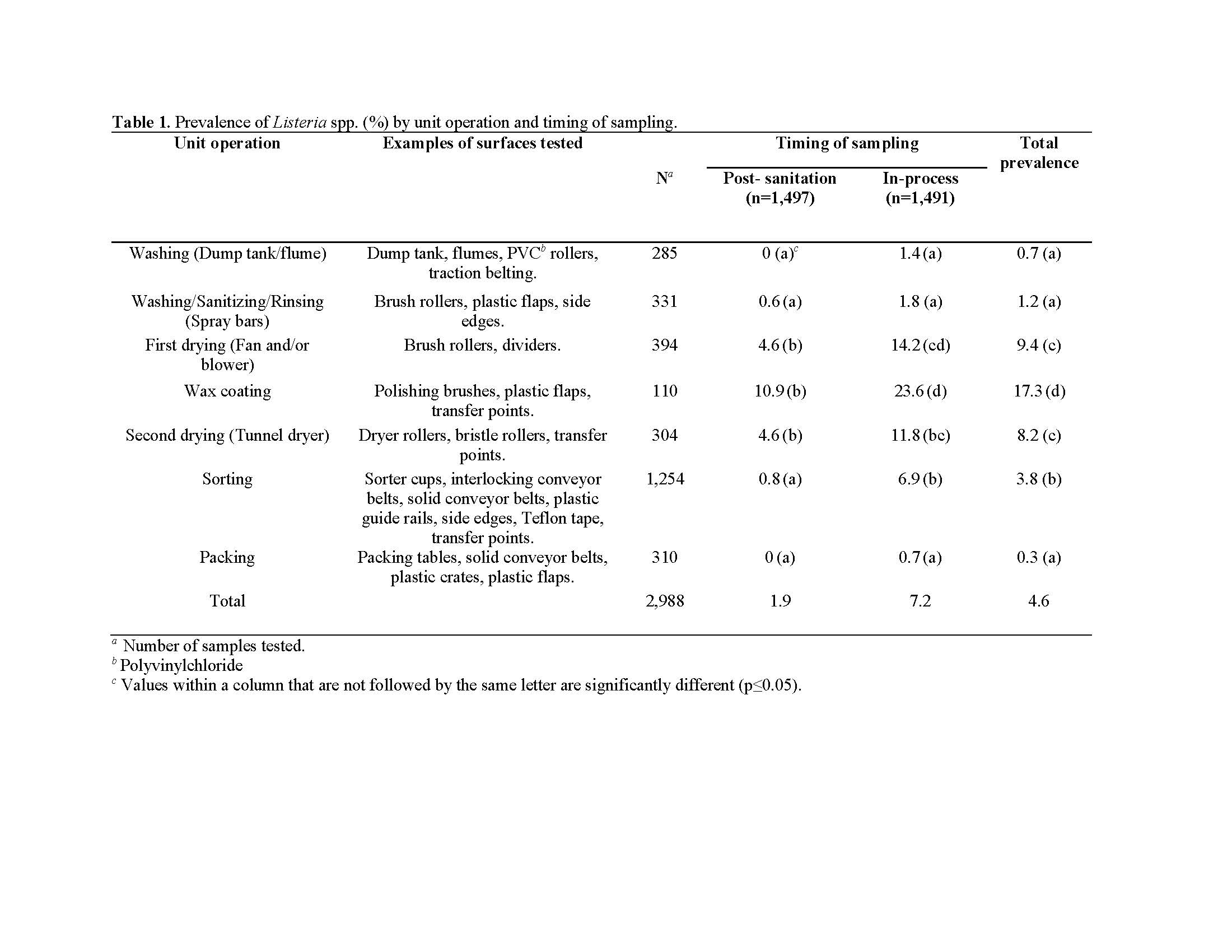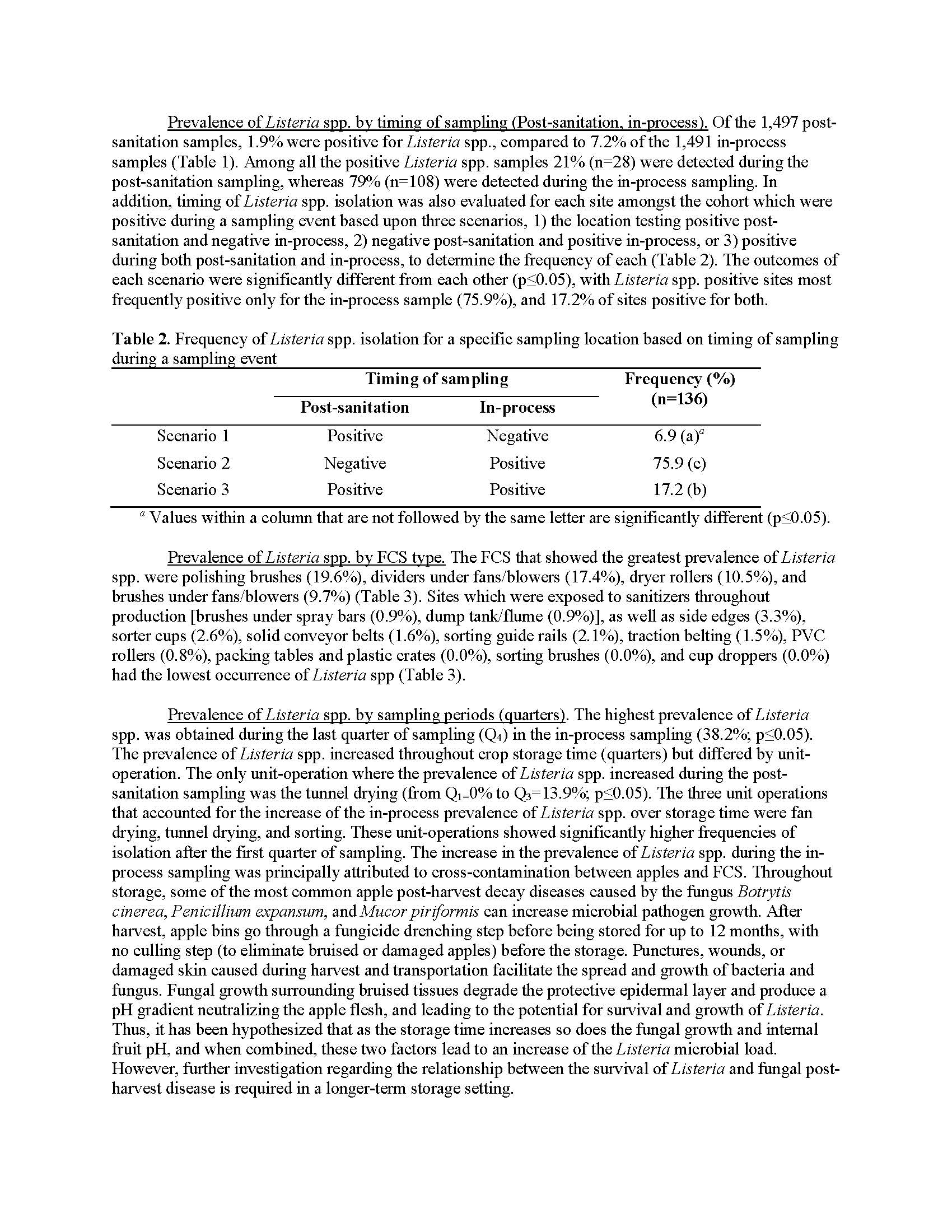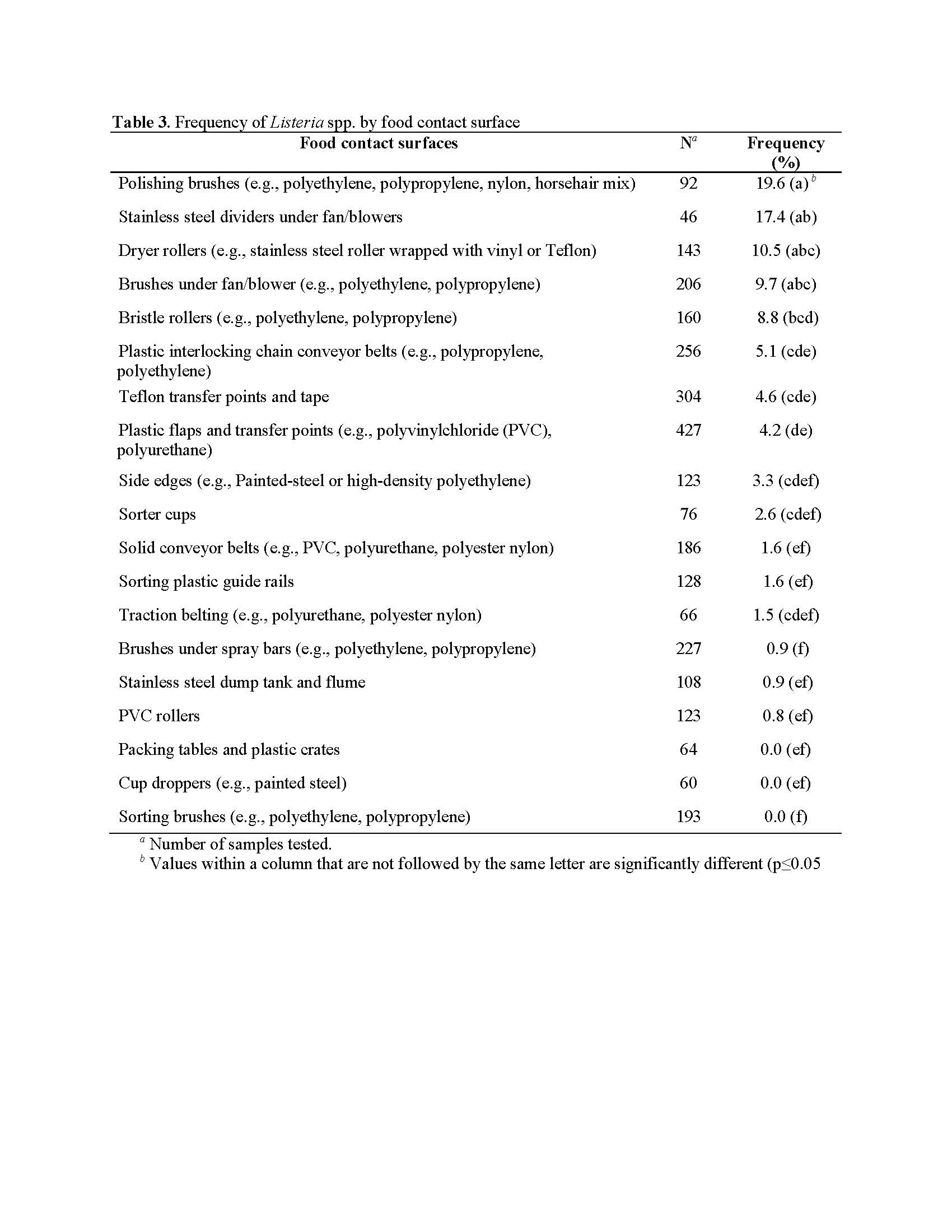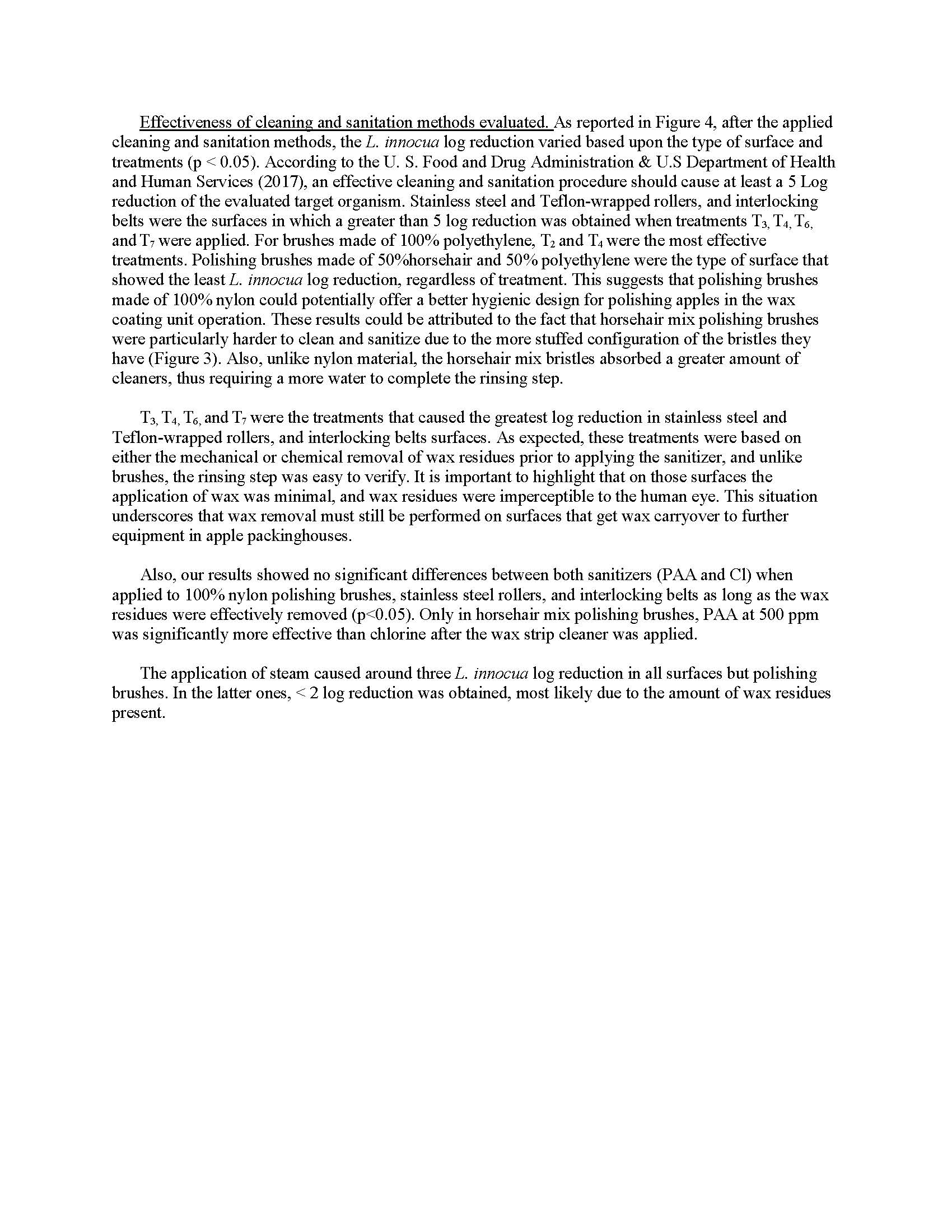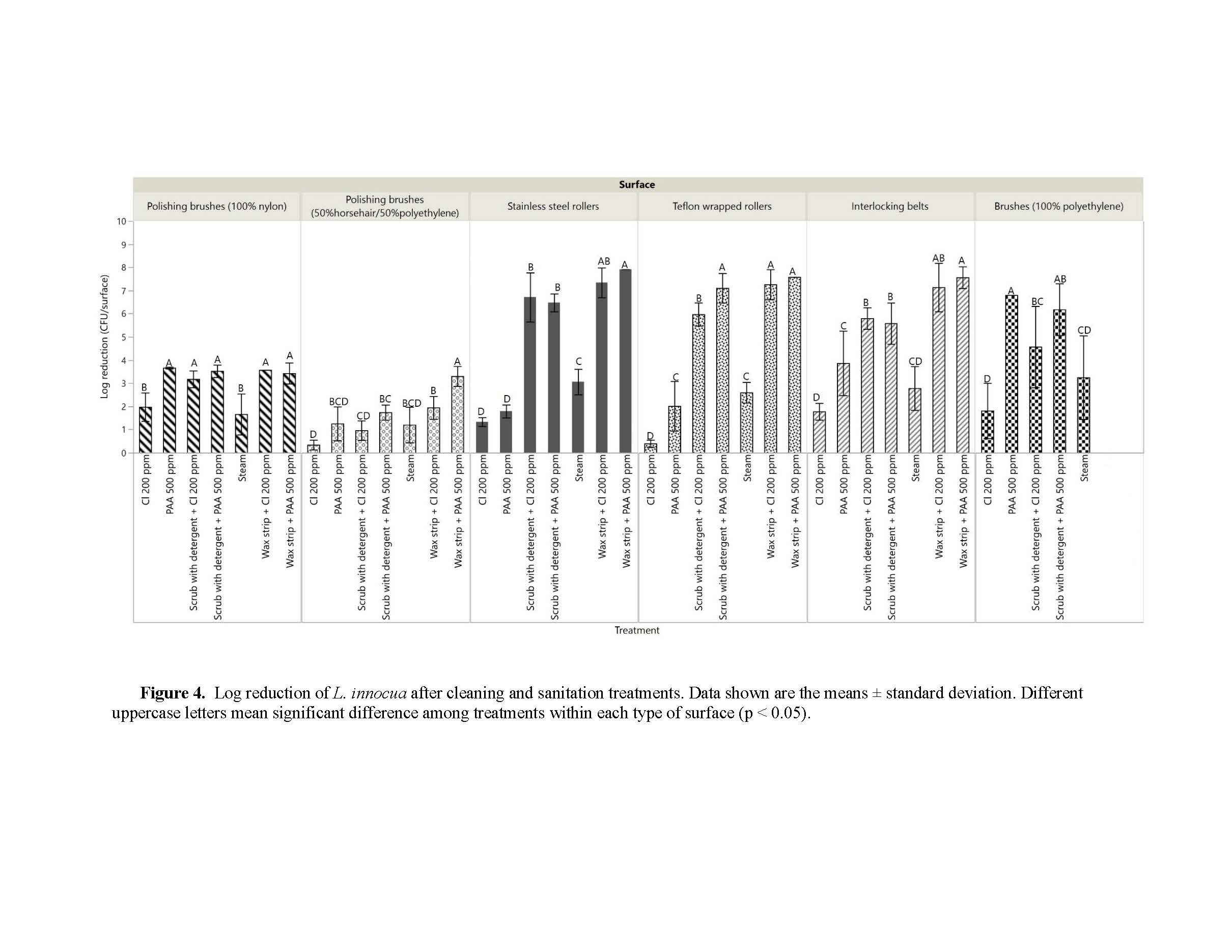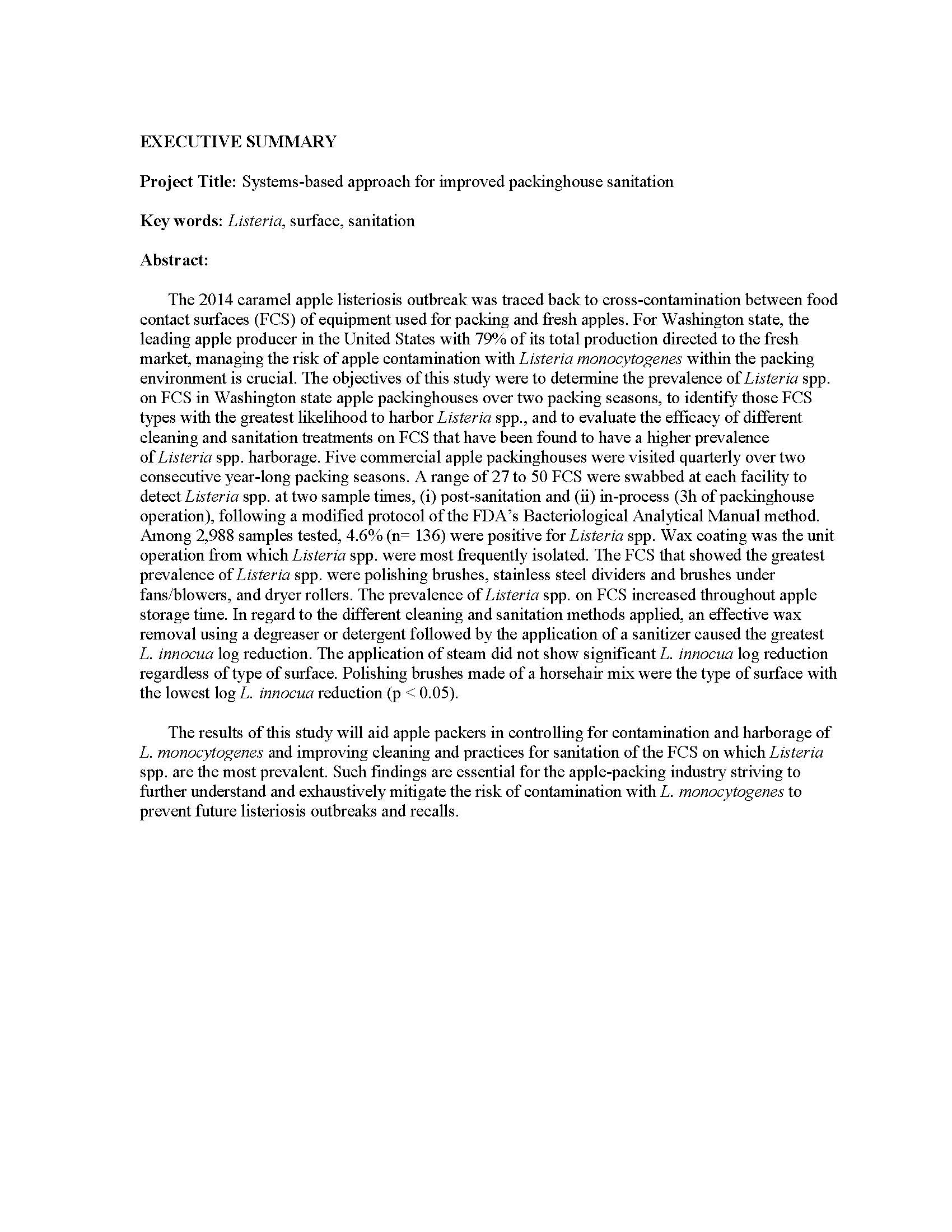Systems-based approach for improved packinghouse sanitation
Author: Faith Critzer
Published: 2022
Summary: The 2014 caramel apple listeriosis outbreak was traced back to cross-contamination between food contact surfaces (FCS) of equipment used for packing and fresh apples. For Washington state, the leading apple producer in the United States with 79% of its total production directed to the fresh market, managing the risk of apple contamination with Listeria monocytogenes within the packing environment is crucial. The objectives of this study were to determine the prevalence of Listeria spp. on FCS in Washington state apple packinghouses over two packing seasons, to identify those FCS types with the greatest likelihood to harbor Listeria spp., and to evaluate the efficacy of different cleaning and sanitation treatments on FCS that have been found to have a higher prevalence of Listeria spp. harborage. Five commercial apple packinghouses were visited quarterly over two consecutive year-long packing seasons. A range of 27 to 50 FCS were swabbed at each facility to detect Listeria spp. at two sample times, (i) post-sanitation and (ii) in-process (3h of packinghouse operation), following a modified protocol of the FDA’s Bacteriological Analytical Manual method. Among 2,988 samples tested, 4.6% (n= 136) were positive for Listeria spp. Wax coating was the unit operation from which Listeria spp. were most frequently isolated. The FCS that showed the greatest prevalence of Listeria spp. were polishing brushes, stainless steel dividers and brushes under fans/blowers, and dryer rollers. The prevalence of Listeria spp. on FCS increased throughout apple storage time. In regard to the different cleaning and sanitation methods applied, an effective wax removal using a degreaser or detergent followed by the application of a sanitizer caused the greatest L. innocua log reduction. The application of steam did not show significant L. innocua log reduction regardless of type of surface. Polishing brushes made of a horsehair mix were the type of surface with the lowest log L. innocua reduction (p < 0.05). The results of this study will aid apple packers in controlling for contamination and harborage of L. monocytogenes and improving cleaning and practices for sanitation of the FCS on which Listeria spp. are the most prevalent. Such findings are essential for the apple-packing industry striving to further understand and exhaustively mitigate the risk of contamination with L. monocytogenes to prevent future listeriosis outbreaks and recalls.
Keywords:

